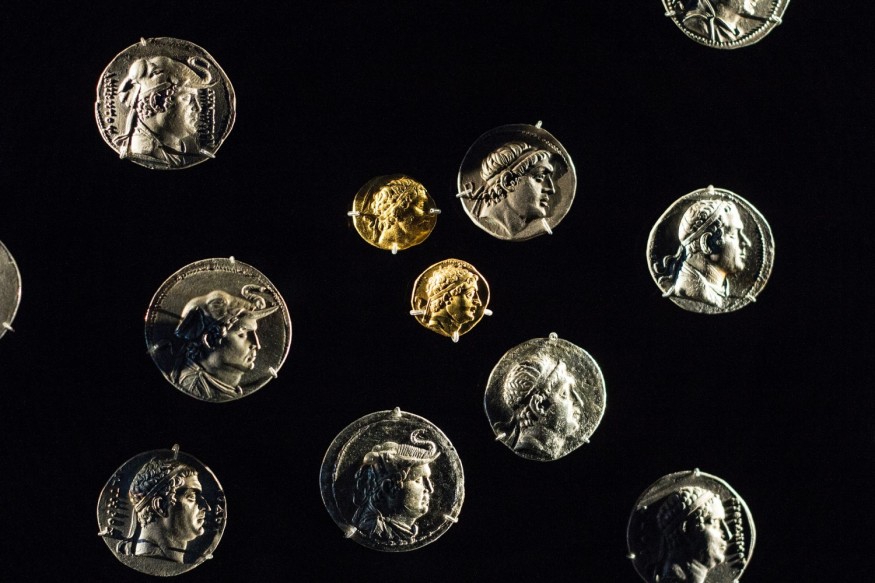A cache of 44 Byzantine gold coins as well as other valuable items has been found by archaeologists in Israel. The most recent coins discovered were dated by specialists from the Israel Antiquities Authority (IAA) to the year A.D. 635, during the Muslim invasion of Byzantine Palestine.

Byzantine Gold Coins
Coins from the hoard were produced by the Byzantine Empire under the rule of Emperors Phocas and Heraclius. The entire amount was represented by gold solidus coins, which were used as standard currency during the Byzantine era.
According to Gabriela Bijovsky, a numismatic expert of the IAA, the majority of the coins are of the Byzantine Emperor Heraclius. The photos from the coins are intriguing. While only his photo was featured on the coin during his early reign as emperor, his sons' portraits also appeared. Some of his sons' pictures are represented with long beards, while some were taken when they were young.
According to an article in the journal Bulletin of the American Schools of Oriental Research, the coins were found in the Hermon Stream Nature Reserve in northern Israel. It was once the location of the ancient city of Banias, also known as Paneas or Panias, and once served as a cultic site for Pan, a Greek fertility god who was half human and half goat. According to the statement, Christians consider it to be the location where the Apostle Peter proclaimed Jesus to be the Christ.
Experts believe that the coin cache was put there by someone who was escaping after the Muslim conquest because it was discovered wedged into the base of a stone wall.
According to Yoav Lerer, excavation director for the IAA, the discovery marks a particular period of time where we could imagine the owner hiding his wealth under the prospect of war in the hopes of coming back one day to claim his possessions. Lerer continued by saying that, looking back, we can see that he was less fortunate.
Based on Live Science report, researchers also discovered ceramic kilns, water channels, pipelines, building ruins, bronze coins, and artifact fragments made of pottery, glass, and metal in addition to the coins.
The discovery of the coin hoard, according to Lerer, may potentially offer insight into the city of Banias's economy during the final 40 years of Byzantine authority.
City of Banias
Banias has had a significant spiritual impact on numerous cultures. Originally a Canaanite altar to the god Baal, it was renamed Pan, the half-goat, half-man god of shepherds and fertility during the Hellenistic era.
The site reached its height in the first century AD during the reign of Herod and his son Philip II, who changed its name to Caesarea in honor of Caesar Augustus, the Roman Emperor.
It is located in the Golan Heights, which Israel occupied after capturing them from Syria in the Six-Day War of 1967, fostering settlements and a booming tourism sector.
ALSO READ: Treasure Trove of 200 Roman-era Coins Discovered in Spain Through a Hungry Badger Hunting For Food
Significance of the Excavation
According to NBC News, the Israel Electric Corporation, which is seeking to connect the nearby Druze holy site of Nabi Khadr to the national power grid, provided funding for the Banias excavation.
The finding is considered as significant as the discovery earlier this year of the church that archaeologists believed to be St. Peter's birthplace.
The recently discovered Byzantine Church, presumably the Church of Saint Peter and the gold coin treasure, are comparable according to Raya Shurky, director of the National Parks Authority.
RELATED ARTICLE: Hoard of 5,500 Roman-era Silver Found Buried By The River in Augsburg City in Germany; Who Owned It?
Check out more news and information on Environment in Science Times.
© 2025 ScienceTimes.com All rights reserved. Do not reproduce without permission. The window to the world of Science Times.












